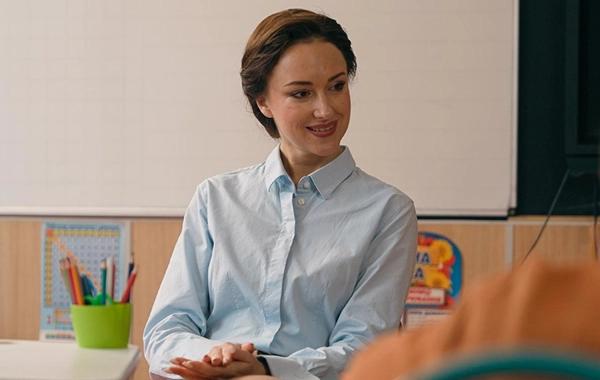Teacher team building involves fostering strong, collaborative relationships among educators to improve communication, trust, and teamwork. Through activities and strategies, teachers work together to share resources, tackle challenges, and support each other’s professional growth, ultimately enhancing student outcomes.

What is teacher team building?
Teacher team building refers to the intentional efforts and activities aimed at developing cohesive, effective teams of educators who work together to meet both individual and collective goals. The main objective of teacher team building is to create a culture of collaboration, mutual support, and shared responsibility. When teachers work together as a team, they can share ideas, solve problems, and address challenges more effectively.
The process of teacher team building focuses on:
Building trust: Creating a safe space where teachers can depend on one another, share vulnerabilities, and grow without fear of judgment.
Promoting shared responsibility: Encouraging teachers to work together on common goals, such as improving student engagement, sharing classroom resources, or developing curriculum.
Fostering open communication: Encouraging transparent, respectful dialogue, active listening, and constructive feedback helps teachers collaborate, solve problems, and feel valued.
Encouraging professional growth: Teacher teams create opportunities for shared learning, best practice exchange, and ongoing development, fostering a culture of continuous improvement.
Why does teacher team building matter?
In today’s educational environment, teachers are often asked to work together across different subjects, grade levels, and even school campuses. Teacher team building is important because it strengthens the bonds between educators, leading to improved collaboration and ultimately better student outcomes. Here are some key reasons why teacher team building is essential:

Improved communication
Clear, open communication is the foundation of any successful team. Through regular teacher team building activities, educators can learn how to communicate more effectively with one another. This leads to fewer misunderstandings and a smoother, more efficient work environment.

Enhanced problem-solving abilities
Teachers often face challenges in the classroom, such as managing student behavior, developing engaging lesson plans, or finding ways to support diverse learning needs. By working together as a team, teachers can brainstorm creative solutions to these problems. Strong collaboration encourages the sharing of best practices and innovative strategies.

Stronger professional relationships
When teachers build strong, trusting relationships with one another, they feel more supported in their work. A collaborative, positive atmosphere boosts morale, which, in turn, leads to greater job satisfaction and lower turnover rates.

Professional growth
Teacher team building encourages teachers to engage in continuous professional development. Whether it’s through collaborative lesson planning, peer observations, or group discussions, teachers are constantly growing in their skills and knowledge, which ultimately benefits their students.

Increased student achievement
Teachers who collaborate effectively are better equipped to meet students’ needs, differentiate instruction, and create a cohesive learning environment. By working as a team, teachers can ensure that all students receive the support they need to succeed academically and socially.
Unlock your teaching potential – Join for educator team building activities! Enhance your professional development with exclusive educator team building activities, share teacher team building tips, and collaborate with peers on teaching team development.
Teacher team building tips for success
When implementing teacher team building activities, it’s important to keep certain tips in mind to ensure they are effective. Here are some teacher team building tips that will help you make the most of your team development efforts:
- Focus on communication: Effective communication is the foundation of successful team building. Ensure that all team members feel heard and valued. Encourage open dialogue and provide opportunities for teachers to share their ideas and concerns. This fosters an environment where everyone feels comfortable collaborating and contributing to the team’s success.
- Set clear goals: Before starting any team building activity, it’s essential to set clear objectives. Whether it’s improving collaboration, enhancing problem-solving skills, or developing new teaching methods, having a clear goal ensures that all participants are on the same page. Setting measurable goals also allows you to track progress and make adjustments as needed.
- Foster inclusivity: A successful teacher team is an inclusive one. Ensure that all educators, regardless of experience or background, feel included in team activities. By embracing diversity, schools can benefit from a range of perspectives and experiences, which can lead to more innovative solutions and a more harmonious working environment.
- Make activities fun: Teacher team building doesn’t have to be all work and no play. Incorporating fun activities can help lighten the mood and reduce stress. Games, icebreakers, and team-building exercises can encourage creativity and help teachers form deeper connections. When teachers enjoy the activities, they are more likely to participate actively and engage with their colleagues.
- Encourage reflection: After completing team-building activities, take time to reflect on what worked and what could be improved. Encourage team members to share their thoughts and feelings about the experience. Reflection provides valuable insights into what activities were most effective and can help shape future team-building efforts.
Create a collaborative teaching environment – Join for team building! Strengthen your teaching practice with teacher team building tips, engage in fun educator team building activities, and grow your skills through focused teaching team development.
Engaging educator team building activities
There are many educator team building activities that can be implemented in both virtual and in-person settings. Here are some of the most effective teacher team building activities that will help enhance communication, problem-solving skills, and teamwork:
1. Collaborative lesson planning
One of the most practical educator team building activities is collaborative lesson planning. Teachers can work together to plan lessons, share resources, and discuss teaching strategies. This activity not only strengthens teamwork but also helps educators gain fresh insights and perspectives on how to approach their curriculum. By sharing ideas and resources, teachers can create more engaging lessons and ensure a consistent approach across grade levels.
2. Group brainstorming sessions
Brainstorming sessions allow teachers to generate new ideas and solutions to common challenges. Whether it’s coming up with strategies to engage students or tackling classroom management issues, brainstorming in a group setting can lead to creative solutions and a sense of shared ownership. It also encourages teachers to communicate openly and listen to each other’s perspectives, fostering a spirit of collaboration and mutual respect.
3. Teacher retreats and workshops
Teacher retreats or workshops are excellent opportunities for team development. These events provide educators with a chance to relax, bond, and learn new skills. Workshops can focus on specific areas of professional development, such as differentiated instruction, technology integration, or classroom management. By participating in these activities together, teachers can build stronger bonds while improving their teaching techniques.
4. Problem-solving challenges
Problem-solving challenges are excellent for promoting teamwork and critical thinking. Teachers can be divided into small groups and tasked with solving hypothetical classroom scenarios or educational puzzles. This activity encourages collaboration and requires participants to communicate effectively to arrive at solutions. It’s an engaging way to reinforce the importance of teamwork while sharpening problem-solving skills.
5. Peer observations
Peer observations are a powerful tool for teacher team development. By observing each other’s classrooms, teachers can learn new strategies, gain feedback, and foster a culture of continuous improvement. This type of professional development allows educators to see firsthand how their colleagues handle different situations and teaching styles. Additionally, peer observations can open the door for constructive feedback and conversations that enhance collaboration.
Why team building activities are important for teachers?

Strengthens collaboration
- Teachers who work closely as a team are better equipped to share resources, ideas, and strategies.
- Strong collaboration among teachers translates into more consistent and impactful learning experiences for students.
Improves communication
- Team-building activities create opportunities for teachers to express ideas, concerns, and feedback in a relaxed environment.
- By improving communication, teachers can better align on goals, share innovative practices, and resolve conflicts constructively.
Builds trust and relationships
- Spending time together outside of formal settings helps teachers build trust and deepen their professional relationships.
- A supportive network of colleagues leads to a more encouraging and motivating work environment.
Boosts morale and reduces stress
- Teaching can be stressful, and team-building activities offer a chance for teachers to recharge and connect on a personal level.
- A positive and uplifting team dynamic improves job satisfaction and overall well-being.
Encourages innovation
- Brainstorming and problem-solving during team-building activities spark creativity and lead to innovative approaches to teaching.
- Teachers can explore new methods and experiment with ideas that benefit the entire school community.
Reinforces a unified vision
- Team-building aligns teachers with the school’s mission and values, ensuring everyone works towards common goals.
- It fosters a culture where every teacher feels valued and motivated to contribute to the success of the school.
Online team building activities for remote teachers
With the rise of remote teaching, staying connected and fostering a strong sense of community among educators has become essential. Online team-building activities are an excellent way to create bonds, encourage collaboration, and boost morale among remote teachers. These activities are not just fun but also help educators share ideas, strategies, and resources to enhance their teaching experiences.
Why team building matters for remote teachers
Remote teaching can sometimes feel isolating, with fewer opportunities for face-to-face interaction. Team-building activities:
- Foster a sense of belonging and connection.
- Build trust and improve communication among team members.
- Encourage the exchange of teaching strategies and innovative ideas.
- Provide a platform for teachers to unwind and recharge.
Fun and effective online team-building activities
Here are some creative and practical ideas to engage remote teachers:
- Virtual coffee chats: Schedule informal video calls where teachers can connect, share updates, and discuss their challenges and successes over coffee or tea.
- Online trivia games: Organize trivia sessions with topics ranging from general knowledge to education-specific themes. It’s a fun way to learn and connect.
- Collaborative lesson planning: Create virtual breakout rooms where teachers can brainstorm and plan lessons together, fostering creativity and teamwork.
- Digital escape rooms: Use interactive platforms to design an educational escape room experience that encourages problem-solving and teamwork.
- Show-and-tell sessions: Encourage teachers to share a favorite teaching resource, tech tool, or classroom activity in a virtual setting.
- Wellness sessions: Include activities like virtual yoga, mindfulness exercises, or a guided relaxation session to help teachers de-stress and bond.
Tips for successful online team building
To make these activities impactful:
- Choose activities that align with the team’s interests and professional goals.
- Keep sessions engaging and time-efficient to respect participants’ busy schedules.
- Use platforms like Zoom, Google Meet, or Microsoft Teams to facilitate seamless interactions.
- Rotate leadership roles so every teacher gets a chance to host or lead an activity.
TeachersConnect provides you above all. Become a member today!
Teaching team development: Strengthening collaboration for better student outcomes
In today’s rapidly evolving educational landscape, professional growth is no longer confined to in-person seminars or scheduled conferences. Educators now have the chance to engage in teaching team development through online platforms that connect them with peers from across the globe. These virtual spaces are designed to encourage collaboration, enhance teaching practices, and provide educators the opportunity to develop their skills flexibly, no matter where they are located.
What is teaching team development?
Teaching team development refers to the process where educators collaborate and engage in professional growth together. This process involves sharing resources, teaching strategies, insights, and best practices. It can occur in various formats, such as traditional in-person meetings, professional learning communities (PLCs), or through online teaching communities. In particular, online teaching communities offer a flexible and scalable way for educators to participate in teaching team development, allowing them to continue learning and improving regardless of their geographical location.
An online teaching team development community is a digital space where teachers can connect, share experiences, discuss challenges, and improve their instructional techniques. These communities facilitate continuous professional growth by offering access to a broad range of resources, interactive discussions, and collaboration opportunities. Teachers can enhance their skills, gain fresh perspectives, and build strong professional networks—all while improving their overall teaching effectiveness.
The importance of teaching team development
Fosters innovation in teaching
A collaborative teaching team is more likely to engage in innovative practices and be open to experimentation. When teachers feel supported in their roles and encouraged to think creatively, they are more likely to take risks and try new approaches in the classroom. The collaborative environment fosters a culture of experimentation, where teachers feel empowered to push boundaries and explore diverse teaching strategies. Whether it’s integrating technology to enhance learning, exploring new pedagogical models like flipped classrooms or inquiry-based learning, or experimenting with project-based learning, the collective creativity of a teaching team can lead to exciting, innovative changes.

Increased student achievement
Ultimately, the goal of teaching team development is to improve student outcomes. When teachers collaborate effectively, students benefit from more cohesive instruction, personalized support, and an enriched learning environment. By working together, educators can align their teaching strategies, create a unified approach to curriculum delivery, and address diverse student needs more effectively. Studies have shown that schools with strong, collaborative teaching teams often see improved student performance, as students are exposed to higher-quality teaching, more consistent feedback, and a greater sense of continuity in their learning experiences.
Improved instructional practices
Effective teaching teams enable educators to share best practices, lesson plans, and teaching resources. When teachers collaborate regularly, they are able to exchange strategies and approaches that they may not have considered on their own. This peer-driven professional development helps educators enhance their teaching methods and tailor their lessons to the needs of all students. For instance, a team of teachers might work together to develop differentiated strategies to meet diverse learning styles, ensuring that all students have an opportunity to succeed.
Promotes a shared vision and consistency across classes
Teaching team development helps create a shared educational vision. When teachers across grade levels or subject areas work together, they can align their teaching goals and expectations. This alignment helps ensure that students receive consistent messaging and learning experiences, regardless of the teacher. For example, a team of middle school language arts teachers might work together to align their curricula, ensuring that all students experience a cohesive progression of skills, from writing techniques to reading comprehension.
Opportunities for professional growth
Teaching team development is an ongoing process that contributes significantly to professional growth. Teams can engage in various joint professional development activities, such as workshops, reading groups, or co-teaching experiences, which help enhance their skills, broaden their knowledge, and foster a deeper understanding of effective teaching practices. These collaborative efforts not only allow educators to refine their existing skills but also encourage them to explore new teaching methodologies.
Building stronger relationships with students
Teachers who work together as a team can more easily communicate about student progress, challenges, and successes. This ongoing communication fosters a deeper understanding of each student’s strengths and areas for growth, which enhances the ability to provide personalized support. Collaborative teams can share important insights and strategies for addressing student needs, ensuring that each student’s learning requirements are met in a timely and effective manner.
Supportive and collaborative environment
Teaching can be an isolating profession, especially in large classrooms or when teachers work independently in subject-specific silos. Without a strong support network, educators may struggle to share ideas, strategies, or challenges, which can lead to feelings of isolation and burnout. Team development helps break down these barriers by creating a collaborative, supportive environment where teachers can rely on one another for help, feedback, and encouragement.
Unlock a world of team-building activities, resources, and collaborative opportunities to inspire and empower your educators. Join today and be part of a supportive network that fosters growth, connection, and innovation in teaching.

Fun and creative team-building ideas for teachers’ professional growth
Team-building activities are a fantastic way for teachers to connect, collaborate, and recharge while fostering professional growth. These fun and creative ideas can help educators strengthen relationships, share knowledge, and improve their teaching strategies—all engagingly and enjoyably.
Collaborative brainstorming sessions
- Host a “Teaching Swap Meet,” where teachers share their favorite lesson plans and classroom strategies.
- Organize a “Problem-Solving Jam” to tackle common challenges like student engagement or classroom management.
- Create a “Wish Board” for the school year, where educators collaborate on goals and actionable steps.
Creative workshops
- Arrange painting or craft workshops to encourage creativity and provide a mental reset.
- Host a storytelling session where teachers share impactful classroom experiences to inspire one another.
- Organize role-playing exercises that explore scenarios like parent-teacher meetings or student conflicts.
Active and outdoor challenges
- Plan a scavenger hunt with clues related to teaching topics or school history.
- Organize a “Field Day” with team sports or relay races to build camaraderie.
- Take a nature walk and hold an outdoor brainstorming session for fresh ideas.
Games and trivia
- Host a trivia night with questions about education, pop culture, or fun facts about colleagues.
- Play team-building games like escape rooms, charades, or Pictionary with an educational twist.
- Organize a “Teacher Olympics” with events like whiteboard races or textbook stacking challenges.
Wellness and mindfulness activities
- Offer group yoga or meditation sessions to help teachers de-stress together.
- Host a wellness challenge focusing on hydration, steps, or self-care activities.
- Organize gratitude circles where teachers recognize and celebrate each other’s strengths.
Professional learning in a fun way
- Set up “Book Club Bingo” with books on education, personal development, or creativity.
- Host a mini-conference where teachers present short, TED Talk-style ideas to their peers.
- Use tech tools to gamify professional development, such as quiz apps or breakout rooms.
Building strong teacher teams doesn’t have to be all work and no play. These activities combine fun and professional growth, creating an atmosphere where educators feel supported and inspired.
How teacher team building improves mental health and job satisfaction
Teaching is a rewarding profession, but it comes with challenges that can affect mental health and job satisfaction. Team building among teachers creates a supportive environment, fostering collaboration, reducing stress, and enhancing workplace morale. Here’s how teacher team building can make a difference:
Strengthens relationships among educators
- Encourages trust and open communication, creating a sense of belonging.
- Builds meaningful connections that help teachers support each other during stressful times.
- Promotes teamwork in addressing common challenges, reducing feelings of isolation.

Reduces workplace stress
- Creates a platform for teachers to share ideas, strategies, and solutions to classroom problems.
- Helps in delegating responsibilities effectively, easing individual workloads.
- Provides opportunities to decompress through collaborative activities and team outings.
Boosts job satisfaction
- Fosters a sense of accomplishment by working towards shared goals and celebrating team successes.
- Increases motivation and morale by creating a positive, inclusive workplace culture.
- Encourages professional growth through peer learning and mentorship opportunities
Enhances mental well-being
- Builds a support network where teachers feel valued and heard.
- Promotes a culture of empathy and understanding, reducing burnout.
- Creates a more relaxed and joyful work environment, improving overall mental health.
Inspires innovative teaching practices
- Encourages brainstorming and sharing of creative teaching ideas.
- Promotes continuous learning and adaptation of new methods.
- Strengthens collective problem-solving, ensuring effective solutions for classroom challenges.




